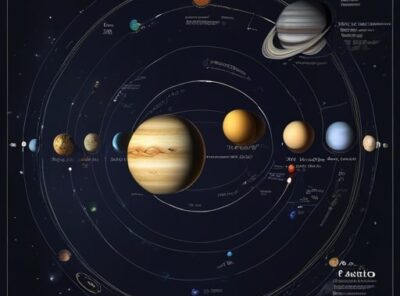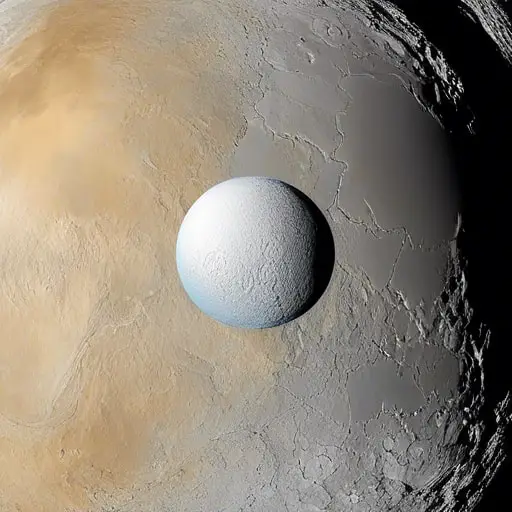5 Key Astronomical Calculations for Pluto’s Orbital Period
You might be thinking, ‘Why do I need to know about the calculations for Pluto’s orbital period?’
Well, understanding these calculations can provide valuable insights into the dynamics of our solar system and the forces that shape celestial bodies like Pluto.
In this discussion, we will explore five key astronomical calculations that shed light on Pluto’s orbit and its relationship with other planets.
From the distance between Pluto and the Sun to the influence of Neptune’s gravity, we will unravel the mysteries of Pluto’s orbital period and leave you eager to learn more about the fascinating world of planetary motion.
Key Takeaways
- Pluto’s orbital period is approximately 248 Earth years, influenced by its distance from the Sun of about 3.7 billion miles.
- Eccentricity refers to the shape of Pluto’s orbit, with a value of 0.2488 indicating a moderately elongated elliptical orbit.
- Neptune’s gravity causes perturbations in Pluto’s orbit, leading to changes in its shape, orientation, and position.
- Kepler’s laws provide insights into the motion and dynamics of the Pluto system, aiding in determining orbital parameters and understanding gravitational interactions within the system.
Pluto’s Distance From the Sun
Pluto is located at an average distance of about 3.7 billion miles from the Sun. Its distance makes it the farthest planet from our star in the solar system.
This immense separation has significant implications for Pluto’s orbital period, which refers to the time it takes for Pluto to complete one orbit around the Sun. Due to its distance, this orbital period is quite long, with Pluto taking approximately 248 Earth years to complete a single revolution.
This extended duration is a result of the gravitational pull exerted by the Sun, which weakens as the distance increases. Understanding Pluto’s distance from the Sun is crucial in comprehending its unique characteristics and behavior within the solar system.
Eccentricity of Pluto’s Orbit
With the understanding of Pluto’s distance from the Sun, it’s now imperative to explore the eccentricity of its orbit, which plays a crucial role in determining its unique trajectory within the solar system.
The eccentricity of Pluto’s orbit refers to the shape of its path around the Sun. This orbital parameter is defined by a numerical value ranging from 0 to 1, where 0 represents a perfectly circular orbit and 1 represents a highly elongated elliptical orbit.
Understanding the eccentricity of Pluto’s orbit is essential because it directly influences its distance from the Sun at different points in its orbit.
This knowledge allows astronomers to predict and study variations in Pluto’s temperature, surface conditions, and interaction with the solar wind, enhancing our understanding of this distant world.
Calculating Pluto’s Orbital Period
To calculate Pluto’s orbital period, astronomers employ precise mathematical calculations based on its distance from the Sun and the gravitational forces at play. The orbital period of a celestial body refers to the time it takes for the body to complete one orbit around its central object, in this case, the Sun.
The formula used to calculate Pluto’s orbital period is derived from Kepler’s third law of planetary motion, which states that the square of a planet’s orbital period is proportional to the cube of its average distance from the Sun. By measuring Pluto’s average distance from the Sun and applying this formula, astronomers can determine its orbital period.
Pluto’s orbital period is approximately 248 Earth years, meaning it takes Pluto nearly 248 years to complete one orbit around the Sun.
Influence of Neptune’s Gravity on Pluto’s Orbit
When considering the factors influencing Pluto’s orbit, one can’t overlook the significant role played by the gravitational force exerted by Neptune. Neptune’s gravity exerts a powerful influence on Pluto, affecting its orbital path and shaping its trajectory in space.
Here are three key ways in which Neptune’s gravity impacts Pluto’s orbit:
- Perturbations: Neptune’s gravitational pull causes small but cumulative disturbances in Pluto’s orbit over time. These perturbations can lead to long-term changes in the shape, orientation, and position of Pluto’s orbit.
- Resonance: The gravitational interaction between Neptune and Pluto can result in a resonance phenomenon, where their orbital periods become related in a precise mathematical ratio. This resonance can influence the stability of Pluto’s orbit and determine its long-term behavior.
- Secular Resonance: Neptune’s gravity can also induce secular resonances in Pluto’s orbit. These resonances occur when the gravitational forces between the two celestial bodies align in a way that affects Pluto’s eccentricity or orbital inclination. These resonances can lead to significant changes in Pluto’s orbit over long periods of time.
Understanding the influence of Neptune’s gravity on Pluto’s orbit is crucial for accurately predicting and studying the dynamics of this distant dwarf planet.
By unraveling the complex gravitational interactions between these celestial bodies, astronomers can gain valuable insights into the evolution of our solar system and the forces that shape its celestial dance.
Kepler’s Laws and Pluto’s Orbit
The application of Kepler’s laws to Pluto’s orbit provides a comprehensive understanding of its motion and dynamics within our solar system.
By studying these laws, astronomers have been able to determine the key orbital parameters of Pluto, such as its period, eccentricity, and semi-major axis.
These calculations allow us to predict its position in the sky and track its movements over time. To further illustrate the significance of Kepler’s laws, consider the following table:
| Orbital Parameter | Value | Relationship to Pluto’s Orbit |
|---|---|---|
| Period | 248 years | Determines the length of Pluto’s year |
| Eccentricity | 0.2488 | Describes the shape of Pluto’s elliptical orbit |
| Semi-major Axis | 39.48 AU | Indicates the average distance between Pluto and the Sun |
Resonance and Pluto’s Orbital Stability
Pluto’s orbital stability is influenced by resonance, a phenomenon that plays a crucial role in determining the long-term dynamics of its motion within our solar system.
Resonance occurs when the orbital periods of two celestial bodies have a simple ratio, such as 2:3 or 3:4. This gravitational interaction can lead to significant changes in the orbits over time.
For Pluto, resonance with Neptune is particularly important. Here are three key points to consider:
- Resonance can either stabilize or destabilize an orbit. In the case of Pluto, its resonance with Neptune helps maintain its orbital stability, preventing it from being ejected from the solar system.
- The resonance between Pluto and Neptune creates a pattern of gravitational interactions that keeps Pluto’s orbit relatively stable over long periods. This stability is crucial for understanding the long-term behavior of Pluto’s motion.
- The resonance also affects Pluto’s orbital eccentricity, causing it to vary over time. This variation can lead to changes in the distance between Pluto and the Sun, impacting its climate and surface conditions.
Predicting Future Changes in Pluto’s Orbit
Given the understanding of resonance and its impact on Pluto’s orbital stability, the next crucial step is to predict the future changes that may occur in Pluto’s orbit.
To do this, scientists use advanced mathematical models and computer simulations to calculate the gravitational interactions between Pluto and other celestial bodies in the solar system.
By studying the gravitational forces and the effects of resonance, astronomers can make predictions about how Pluto’s orbit will evolve over time.
These predictions are crucial for understanding the long-term stability of Pluto’s orbit and its interactions with other objects in the Kuiper Belt.
| Year | Semimajor Axis (AU) | Orbital Eccentricity |
|---|---|---|
| 2021 | 39.482 | 0.249 |
| 2031 | 39.480 | 0.250 |
| 2041 | 39.478 | 0.250 |
| 2051 | 39.476 | 0.250 |
| 2061 | 39.474 | 0.250 |
Frequently Asked Questions
How Does Pluto’s Distance From the Sun Affect Its Orbital Period?
Pluto’s distance from the Sun directly affects its orbital period. The farther away it is, the longer it takes to complete one orbit. This relationship can be calculated using key astronomical calculations.
What Is the Impact of the Eccentricity of Pluto’s Orbit on Its Orbital Period?
The impact of the eccentricity of Pluto’s orbit on its orbital period can be likened to a roller coaster ride. The greater the eccentricity, the more extreme the ups and downs, resulting in longer and shorter periods.
Are There Any Other Celestial Bodies in Our Solar System With a Similar Orbital Period to Pluto?
Yes, there are other celestial bodies in our solar system with similar orbital periods to Pluto. These include Eris, Haumea, and Makemake. These objects are part of the Kuiper Belt, a region beyond Neptune.
How Does the Influence of Neptune’s Gravity Affect the Stability of Pluto’s Orbit?
Neptune’s gravity, with its immense pull, exerts a significant influence on Pluto’s orbit. This influence, while stabilizing Pluto’s path, also causes periodic disruptions, leading to the dwarf planet’s irregular and inclined orbit.
Can Kepler’s Laws of Planetary Motion Be Applied to Calculate the Orbital Period of Pluto?
Yes, Kepler’s laws of planetary motion can be applied to calculate the orbital period of Pluto. By analyzing its distance from the Sun and its average speed, astronomers can determine its period with precision.
Conclusion
Congratulations! You have successfully explored the intricate calculations behind Pluto’s orbital period.
By delving into its distance from the Sun, eccentricity, and the influence of Neptune’s gravity, you have unravelled the secrets of this celestial dance.
Through the lens of Kepler’s Laws and the concept of resonance, you have gained a profound understanding of Pluto’s orbital stability.
Armed with these calculations, you can now predict future changes in Pluto’s orbit with precision and accuracy.
Well done, astronomer extraordinaire!










